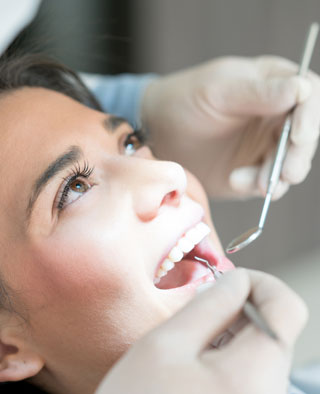
Cosmetic dentistry can give you a smile you not only are proud of, but could change your life for the better. Fair or not, people make snap judgments when they meet others for the first time, whether it is being introduced by a mutual friend on the street, at a party, or in a store, being interviewed for a job, or having a first date. A gleaming smile indicates friendliness, while if you are embarrassed by chipped or discolored teeth, you might hesitate to smile fully.
Fortunately, one of the easiest and least expensive cosmetic and protective procedures, dental bonding, can fix a surprising variety of dental challenges. It can cover teeth stains in a single visit (instead of having veneers customized and placed over them). It can seal chips and cracks from further damage by dental bacteria and help hold the tooth together. Bonding can cover gaps between teeth and improve the appearance of those that are too small or misshapen. It can protect roots that have been exposed by receding gums. Old fillings (including those with controversial mercury) can be replaced by this better material that is less noticeable.
Dental bonding utilizes a composite resin material like a putty that can be made the color of your natural teeth. The area is roughened, then Clearfil SE Bond primer adheres the bond to the tooth without making it overly sensitive (as is the case with alternatives). The bonding is then light-cured to harden it.
Another important cosmetic innovation is the dental crown, which properly crafted looks identical to the visible part of any natural tooth. If a tooth has been knocked out in an accident, fallen out because of poor oral hygiene, ground down because you unconsciously grind your teeth at night, or been severely chipped or cracked beyond what dental bonding can cover and repair, a dental crown would be at least part of the solution.
Since each tooth is unique, our Lakeside dentist, Dr. Cluff, would make an impression of the damaged tooth with dental wax, take photos of the area, and guide you to choose the shade for the crown that best matches the neighboring teeth. She would then send detailed instructions to a top dental lab to create a crown that would cover and protect the damaged area or replace the top of a tooth that is missing.
“We use zirconia for our crowns because it is a hard biocompatible metal that looks completely like dental ceramic and appears to be a natural tooth, a much-improved material compared with dental crowns that have been traditionally used,” Dr Cluff said.
Made an appointment today to have your cosmetic smile needs evaluated.
Read More:
